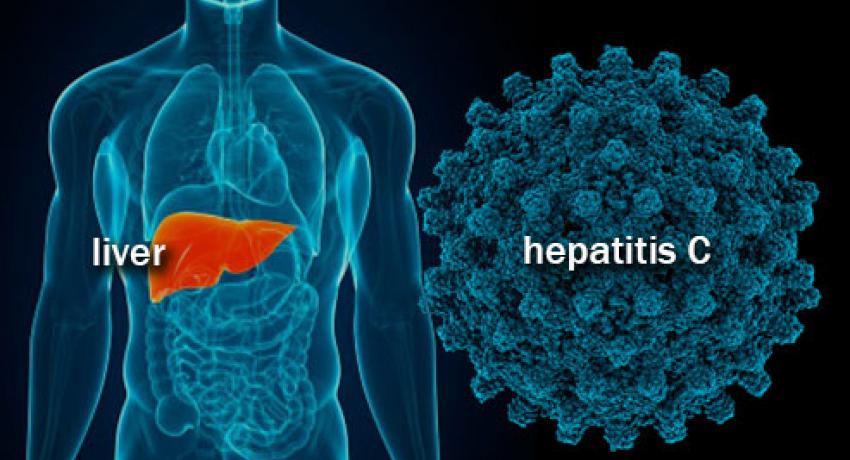Hepatitis C is a liver disease caused by the hepatitis C virus (HCV): the virus can cause both acute and chronic hepatitis, ranging in severity from a mild illness lasting a few weeks to a serious, lifelong illness. Hepatitis C is a major cause of liver cancer.
Symptoms
The incubation period for hepatitis C ranges from 2 weeks to 6 months. Following initial infection, approximately 80% of people do not exhibit any symptoms. Those who are acutely symptomatic may exhibit fever, fatigue, decreased appetite, nausea, vomiting, abdominal pain, dark urine, grey-coloured faeces, joint pain and jaundice (yellowing of skin and the whites of the eyes).
Key facts
- Hepatitis C is a liver disease caused by the hepatitis C virus (HCV): the virus can cause both acute and chronic hepatitis, ranging in severity from a mild illness lasting a few weeks to a serious, lifelong illness.
- Hepatitis C is a major cause of liver cancer.
- The hepatitis C virus is a bloodborne virus: the most common modes of infection are through exposure to small quantities of blood. This may happen through injection drug use, unsafe injection practices, unsafe health care, transfusion of unscreened blood and blood products, and sexual practices that lead to exposure to blood.
- Globally, an estimated 71 million people have chronic hepatitis C virus infection.
- A significant number of those who are chronically infected will develop cirrhosis or liver cancer.
- WHO estimated that in 2016, approximately 399 000 people died from hepatitis C, mostly from cirrhosis and hepatocellular carcinoma (primary liver cancer).
- Antiviral medicines can cure more than 95% of persons with hepatitis C infection, thereby reducing the risk of death from cirrhosis and liver cancer, but access to diagnosis and treatment is low.
- There is currently no effective vaccine against hepatitis C; however, research in this area is ongoing.
Hepatitis C virus causes both acute and chronic infection. New HCV infections are usually asymptomatic. Some persons get acute hepatitis which does not lead to a life-threatening disease. Around 30% (15–45%) of infected persons spontaneously clear the virus within 6 months of infection without any treatment.
The remaining 70% (55–85%) of persons will develop chronic HCV infection. Of those with chronic HCV infection, the risk of cirrhosis ranges between 15% and 30% within 20 years.
Geographical distribution
Hepatitis C is found worldwide. The most affected regions are the WHO Eastern Mediterranean Region and the WHO European Region, with an estimated prevalence in 2015 of 2.3% and 1.5% respectively. Prevalence of HCV infection in other WHO regions varies from 0.5% to 1.0%. Depending on the country, hepatitis C virus infection can be concentrated in certain populations. For example, 23% of new HCV infections and 33% of HCV mortality is attributable to injecting drug use. Yet, people who inject drugs and people in prisons are not often included in national responses.
In countries where infection control practices are or were historically insufficient, HCV infection is often widely distributed in the general population. There are multiple strains (or genotypes) of the HCV virus and their distribution varies by region. However, in many countries, the genotype distribution remains unknown.
Transmission
The hepatitis C virus is a bloodborne virus. It is most commonly transmitted through:
- injecting drug use through the sharing of injection equipment;
- the reuse or inadequate sterilization of medical equipment, especially syringes and needles in healthcare settings;
- the transfusion of unscreened blood and blood products;
- sexual practices that lead to exposure to blood (for example, among men who have sex with men, particularly those with HIV infection or those taking pre-exposure prophylaxis against HIV infection).
HCV can also be transmitted sexually and can be passed from an infected mother to her baby; however, these modes of transmission are less common.
Hepatitis C is not spread through breast milk, food, water or casual contact such as hugging, kissing and sharing food or drinks with an infected person.
WHO estimates that in 2015, there were 1.75 million new HCV infections in the world (23.7 new HCV infections per 100 000 people).
Symptoms
The incubation period for hepatitis C ranges from 2 weeks to 6 months. Following initial infection, approximately 80% of people do not exhibit any symptoms. Those who are acutely symptomatic may exhibit fever, fatigue, decreased appetite, nausea, vomiting, abdominal pain, dark urine, grey-coloured faeces, joint pain and jaundice (yellowing of skin and the whites of the eyes).
Testing and diagnosis
Because new HCV infections are usually asymptomatic, few people are diagnosed when the infection is recent. In those people who go on to develop chronic HCV infection, the infection is also often undiagnosed because it remains asymptomatic until decades after infection when symptoms develop secondary to serious liver damage.
HCV infection is diagnosed in 2 steps:
- Testing for anti-HCV antibodies with a serological test identifies people who have been infected with the virus.
- If the test is positive for anti-HCV antibodies, a nucleic acid test for HCV ribonucleic acid (RNA) is needed to confirm chronic infection because about 30% of people infected with HCV spontaneously clear the infection by a strong immune response without the need for treatment. Although no longer infected, they will still test positive for anti-HCV antibodies.
After a person has been diagnosed with chronic HCV infection, he or she should have an assessment of the degree of liver damage (fibrosis and cirrhosis). This can be done by liver biopsy or through a variety of non-invasive tests.
The degree of liver damage is used to guide treatment decisions and management of the disease.
Treatment
WHO recommends treating all persons with chronic HCV infection over the age of 12 with pan-genotypic DAAs. Pan-genotypic DAAs remain expensive in many high- and upper-middle-income countries. However, prices have dropped dramatically in many countries (primarily low-income and lower middle-income countries), due to the introduction of generic versions of these medicines.

